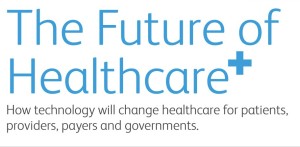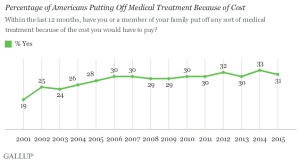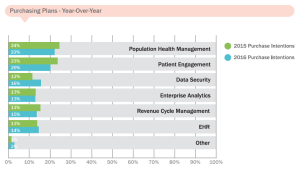 As HIMSS 2016, the annual conference of health information technology community, convenes in Vegas, an underlying market driver is fast-reshaping consumers’ needs that go beyond personal health records: that’s personal health-financial information and tools to help people manage their growing burden of healthcare financial management.
As HIMSS 2016, the annual conference of health information technology community, convenes in Vegas, an underlying market driver is fast-reshaping consumers’ needs that go beyond personal health records: that’s personal health-financial information and tools to help people manage their growing burden of healthcare financial management.
There’s a financial risk-shift happening in American health care, from payers and health insurance plan sponsors (namely, employers and government agencies) to patients – pushing them further into their role as health care consumers.
The burden of health care costs weighs heavier on younger U.S. health citizens, based on a survey from the Xerox Healthcare Business Group released today at the start of the HIMSS meating.
Fifty percent of Millenials have delayed healthcare due to cost: which is the #1 issue Millenials consider when picking a provider. The same is true among people in the Gen X cohort, who cite cost as the top consideration in selecting health providers; 45% of Gen Xers have delayed treatment due to cost. In contrast, 39% of Boomers and 15% of the Greatest Generation members have delayed care due to cost.
Younger people are keen to access their personal health information from EMRs versus older people, with the belief that the PHI will enable them to better manage their health and lifestyle decisions, breaking down as follows:
- 75% of Millenials are interested in accessing EMR information
- 71% of Gen Xers
- 57% of Boomers
- 53% of Greatest Generation.
A majority of all consumers across these generational cohorts are keen on health providers, health insurance plans, and pharmacies/pharmacists to be connected for their health.
Xerox commissioned Y&R’s BAV Consulting group to survey 761 U.S. adults who are the healthcare decision makers for their households.
 Health Populi’s Hot Points: One in 3 Americans put off medical treatment due to cost, according to the latest Gallup Poll asking the question in November 2015.
Health Populi’s Hot Points: One in 3 Americans put off medical treatment due to cost, according to the latest Gallup Poll asking the question in November 2015.
As the line chart from Gallup illustrates, there’s been a rise of health care self-rationing for 15 years, increasing 50% since 2001 and settling around the 1 in 3 ratio since 2010. This self-rationing due to cost among one in three people has persisted in the context of the Affordable Care Act implementation in the most recent years.
 The two most popular line items sought by buyers of healthcare IT in 2016 (defined as “purchase intentions”) will be population health management and patient engagement, according to The Big Mega HIT Purchasing Report published last week by peer60.
The two most popular line items sought by buyers of healthcare IT in 2016 (defined as “purchase intentions”) will be population health management and patient engagement, according to The Big Mega HIT Purchasing Report published last week by peer60.
Consumers — younger and older — are looking to health care providers to connect the pieces of health IT and provider touch points to help them get to overall wellness –which includes physical and mental health, along with personal financial health. To drive population health — the top-demanded health IT offering according to peer60 — patient engagement will need to cover all aspects of personal health the way consumers define it. This paradigm was addressed in a recent JAMA article, Value-Based Payments Require Valuing What Matters to Patients.





 I'm in amazing company here with other #digitalhealth innovators, thinkers and doers. Thank you to Cristian Cortez Fernandez and Zallud for this recognition; I'm grateful.
I'm in amazing company here with other #digitalhealth innovators, thinkers and doers. Thank you to Cristian Cortez Fernandez and Zallud for this recognition; I'm grateful. Jane was named as a member of the AHIP 2024 Advisory Board, joining some valued colleagues to prepare for the challenges and opportunities facing health plans, systems, and other industry stakeholders.
Jane was named as a member of the AHIP 2024 Advisory Board, joining some valued colleagues to prepare for the challenges and opportunities facing health plans, systems, and other industry stakeholders.  Join Jane at AHIP's annual meeting in Las Vegas: I'll be speaking, moderating a panel, and providing thought leadership on health consumers and bolstering equity, empowerment, and self-care.
Join Jane at AHIP's annual meeting in Las Vegas: I'll be speaking, moderating a panel, and providing thought leadership on health consumers and bolstering equity, empowerment, and self-care.